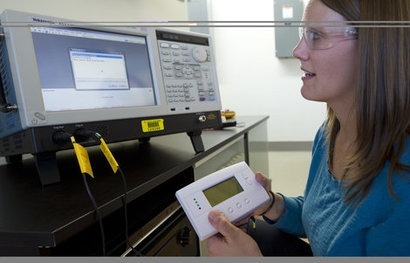
The cost-shared projects with industry, universities, and other stakeholders will address the challenge of enabling the nation's electric grid to handle increasing amounts of renewable energy. The work will be based on the Integrated Network Testbed for Energy Grid Research and Technology Experimentation (INTEGRATE) which NREL is managing. All of the technical teams chosen for the project will test their technologies in NREL's unique megawatt-scale Energy Systems Integration Facility (ESIF).
“Advanced control systems, smart consumer devices, energy storage, and emerging communications technologies will combine to help the grid run more reliably and efficiently” said NREL's Associate Director for Energy Systems Integration Bryan Hannegan. “Working together, NREL and our INTEGRATE partners can use ESIF's capabilities to help accelerate this modernisation of our electric grid and enable a clean, affordable, and reliable energy future.”
Hannegan added that technologies such as smart appliances and electric vehicles are changing how we think about and operate the electrical grid. As these technologies are commercialized and adopted by consumers, the grid of the future must be able to draw on a wide range of resources to maintain a stable power supply and deliver clean, reliable energy to consumers. The INTEGRATE project is a key step toward achieving that future.
The project is sponsored by the DOE’s Office of Energy Efficiency and Renewable Energy and its objective is to provide grid services in a holistic manner using an open-source, interoperable platform that would allow renewable energy systems and other clean energy technologies to be connected to "smart" power grids in a "plug and play" manner, similar to how computers allow users to plug in new devices and connect automatically to the device. Smart power grids include communication technologies to make the grid easier to monitor and control.
One of the companies partnering with NREL, Omnetric Group, is to design an open-source interoperable platform at the distribution scale. Omnetric is a joint venture between Siemens and Accenture working with partners Duke Energy, CPS Energy and the University of Texas San Antonio. It will leverage the expertise of these organisations in order to develop a distributed control hierarchy, based on an open field message bus architecture that gets away from the traditional centralised control concept, allowing decisions to be made at the edge of the grid with more timely response to changing conditions.
Another company, Smarter Grid Solutions, will deploy and demonstrate an integrated, flexible plug-and-play grid management solution, using Active Network Management (ANM) to enhance the capacity of the grid to host renewable energy resources. This will have the ability to manage and maintain the distribution grid within operating limits through the autonomous management, coordination and control of distributed energy resources (DER) in real-time to more fully utilise existing network assets. The project includes an Industry Project Advisory Board that will help inform the uses case requirements. Included on the board are members from Pecan Street Inc., NRG Energy, SolarCity, New York State Smart Grid Consortium, Con Edison, National Grid, Iberdrola USA, National Rural Electric Cooperative Association (NRECA) and SIMARD SG.
The Electric Power Research Institute (EPRI) is to lead a third project focusing on the intelligent control of connected devices. This will involve the demonstration of an end-to-end framework of communication and control technologies, integrating operation of different domains within distribution systems (including distribution management systems, demand response services, and residential appliance scheduling) through open source software tools. The framework includes an enterprise integration test environment, commercial, Advanced Distribution Management System (ADMS), open software platforms, open Home Energy Management System (HEMS) platform, communication modules, and applications.
EPRI will also, under a separate partnership, examine exactly how and how many grid-connected electronic devices can help increase the grid's ability to accept power from renewable energy systems. The project will assess thermostats, pool pumps, electric vehicle chargers, solar photovoltaic (PV) inverters, and community battery energy storage devices and will also study how small-scale consumer equipment and large-scale utility equipment can work together. Under the project, all of the smart devices will be installed in the ESIF and tested for their ability to provide grid services.
The fifth project is being led by the University of Delaware. This will test how electric vehicles can provide energy storage support to the power grid. V2G "vehicle-to-grid" technology, developed by the university in 1997, allows owners of electric vehicles to use the vehicle's battery pack as a supplemental power supply. Utilities can leverage V2G-equipped electric vehicles, in coordination with a smart grid, to help regulate local power grids.
For additional information:

